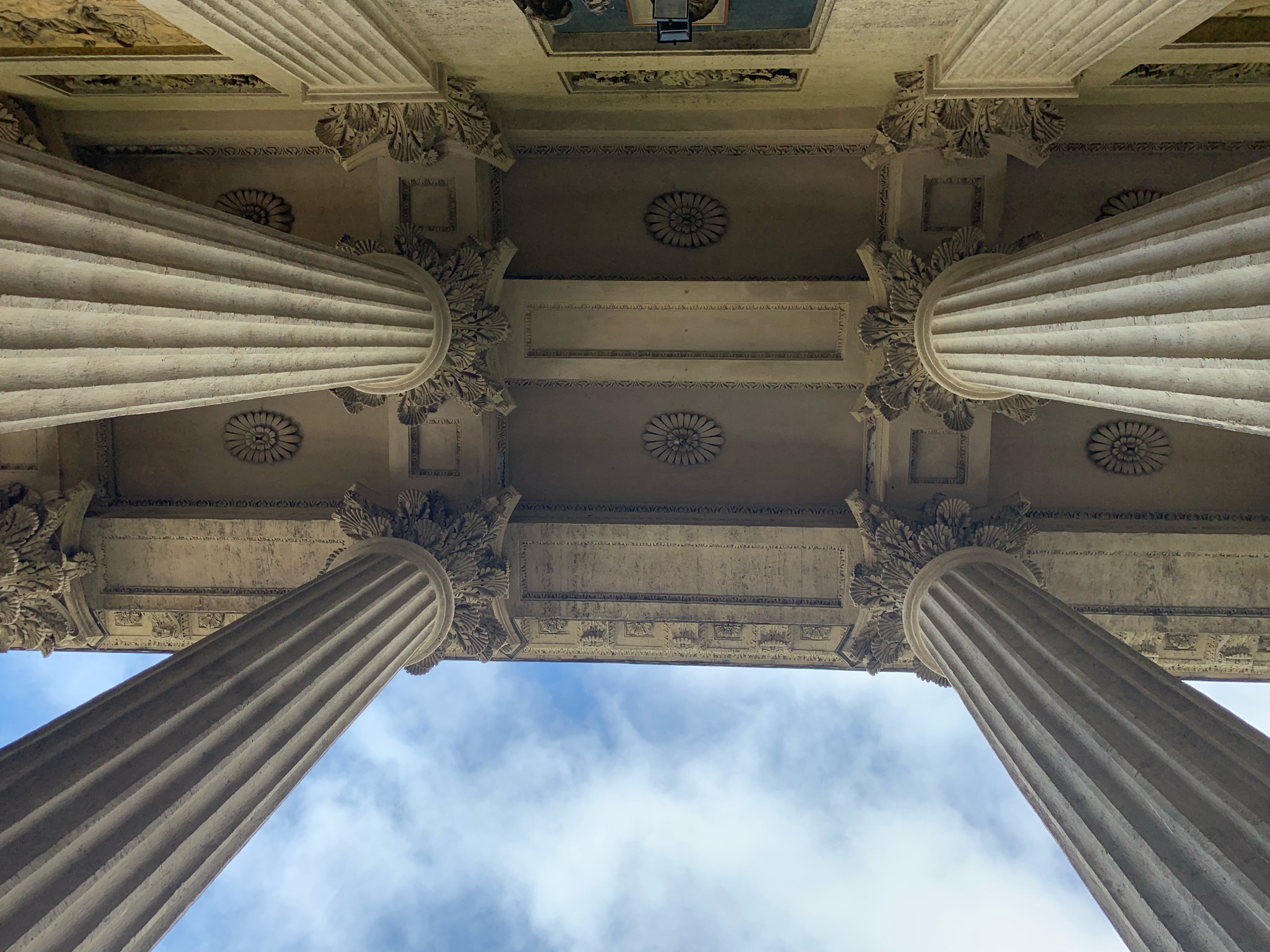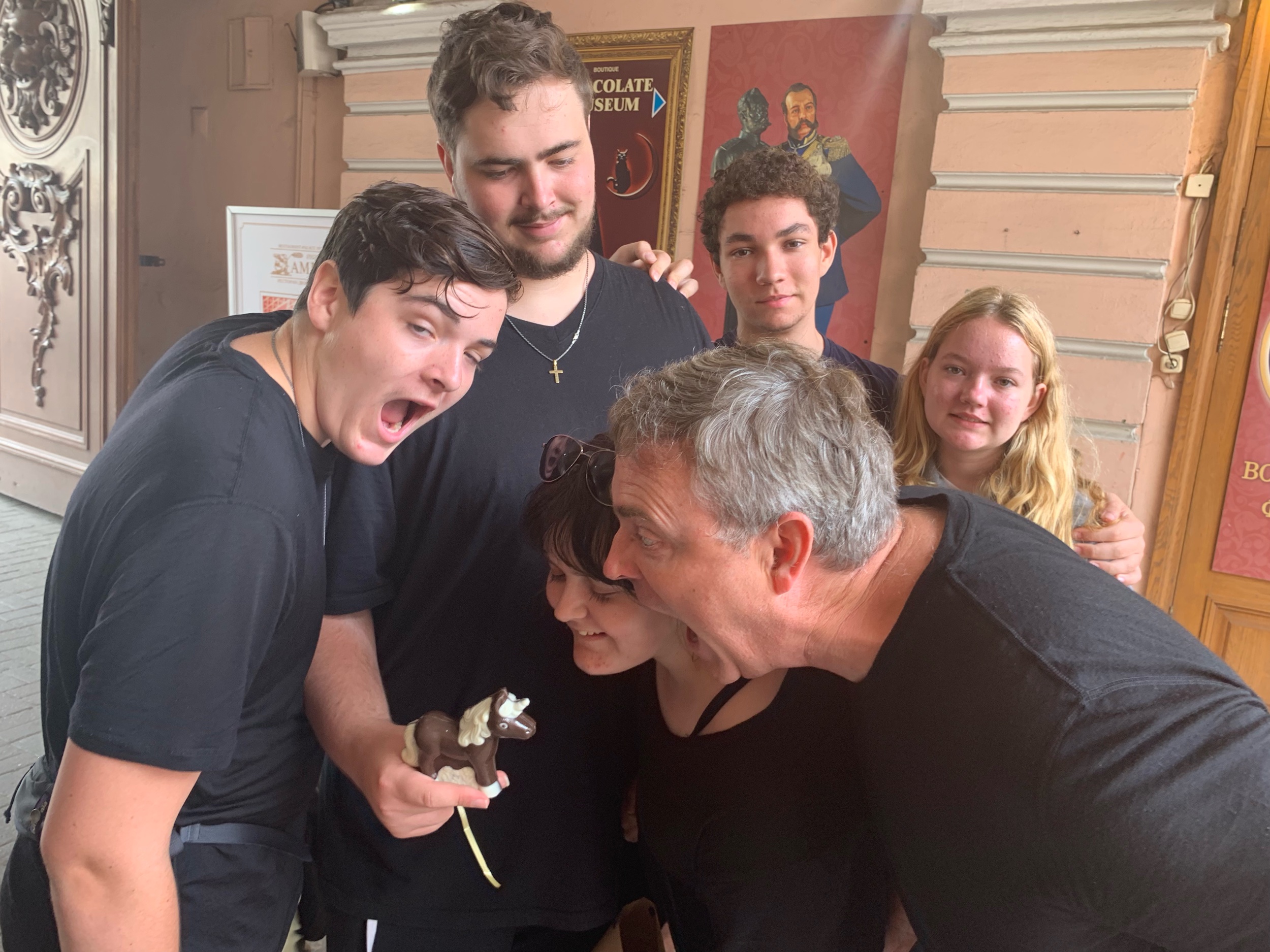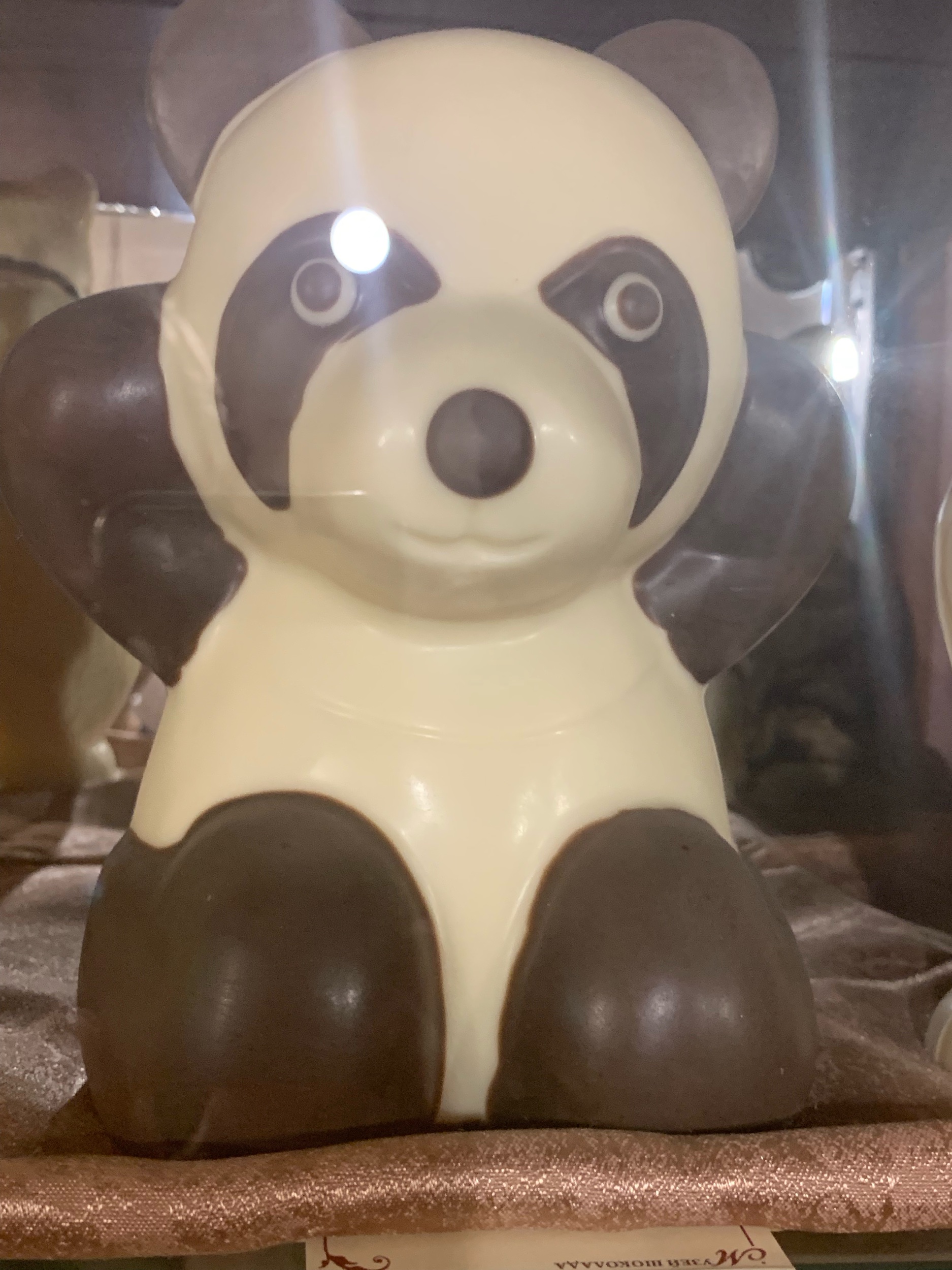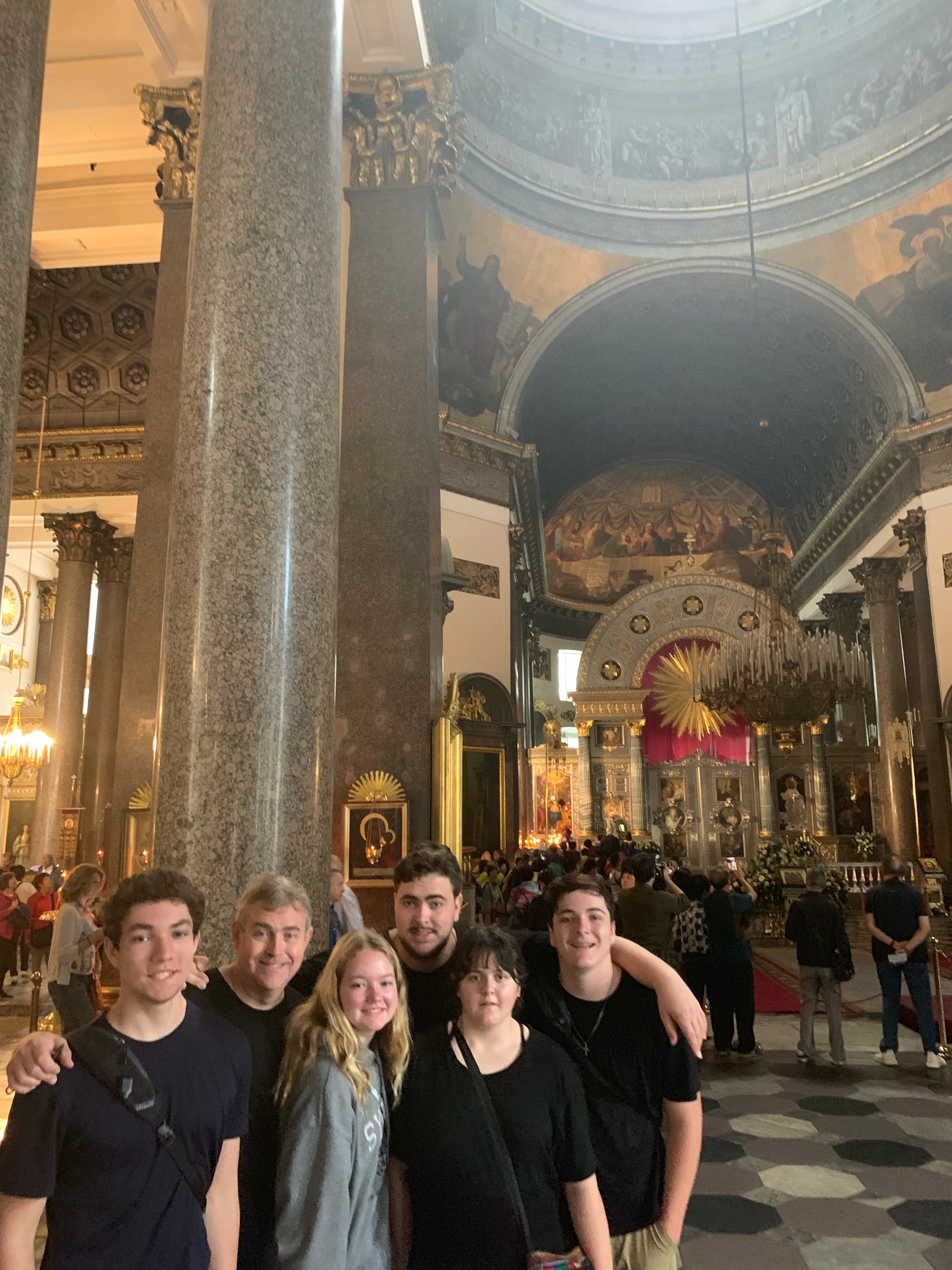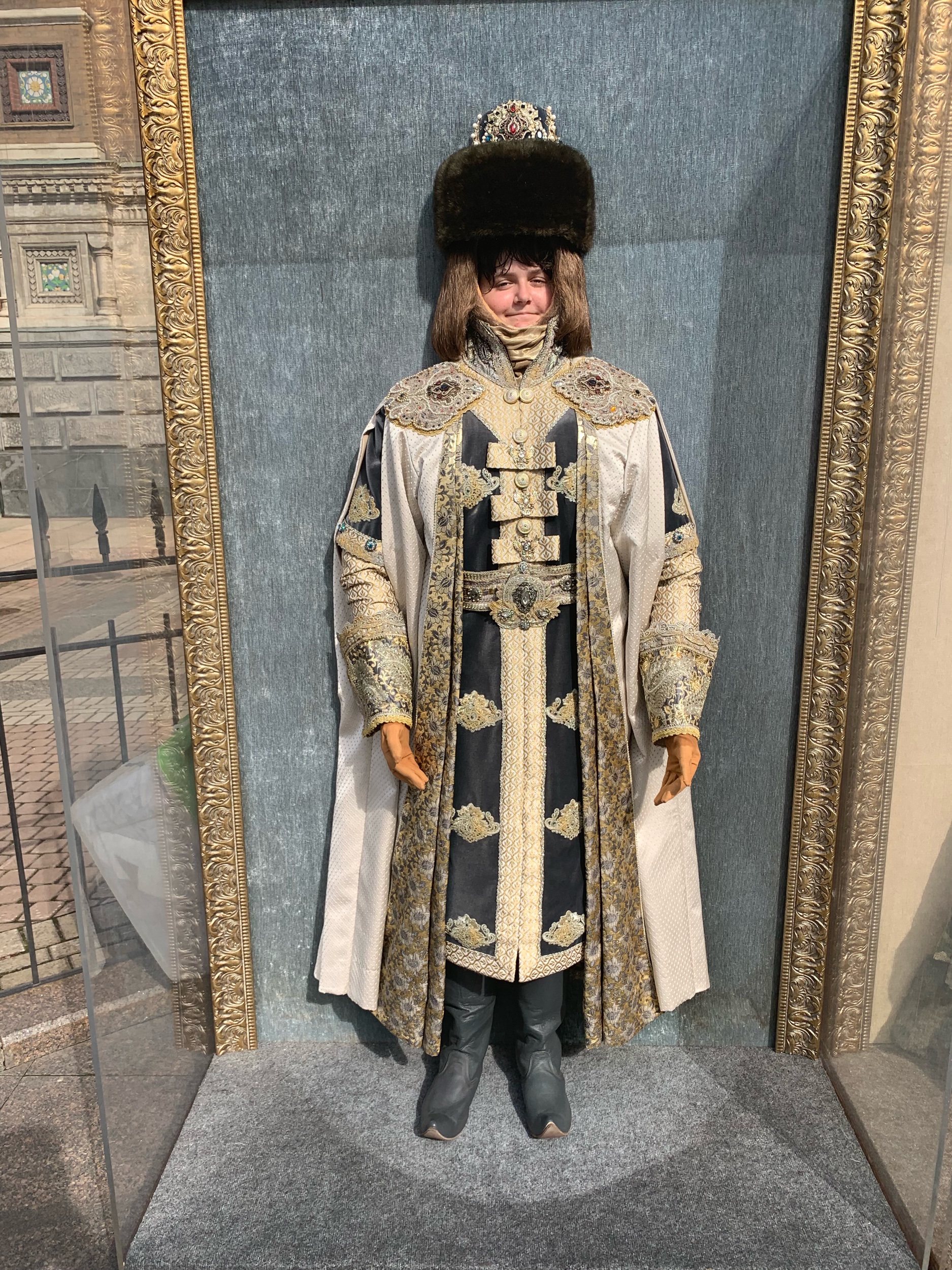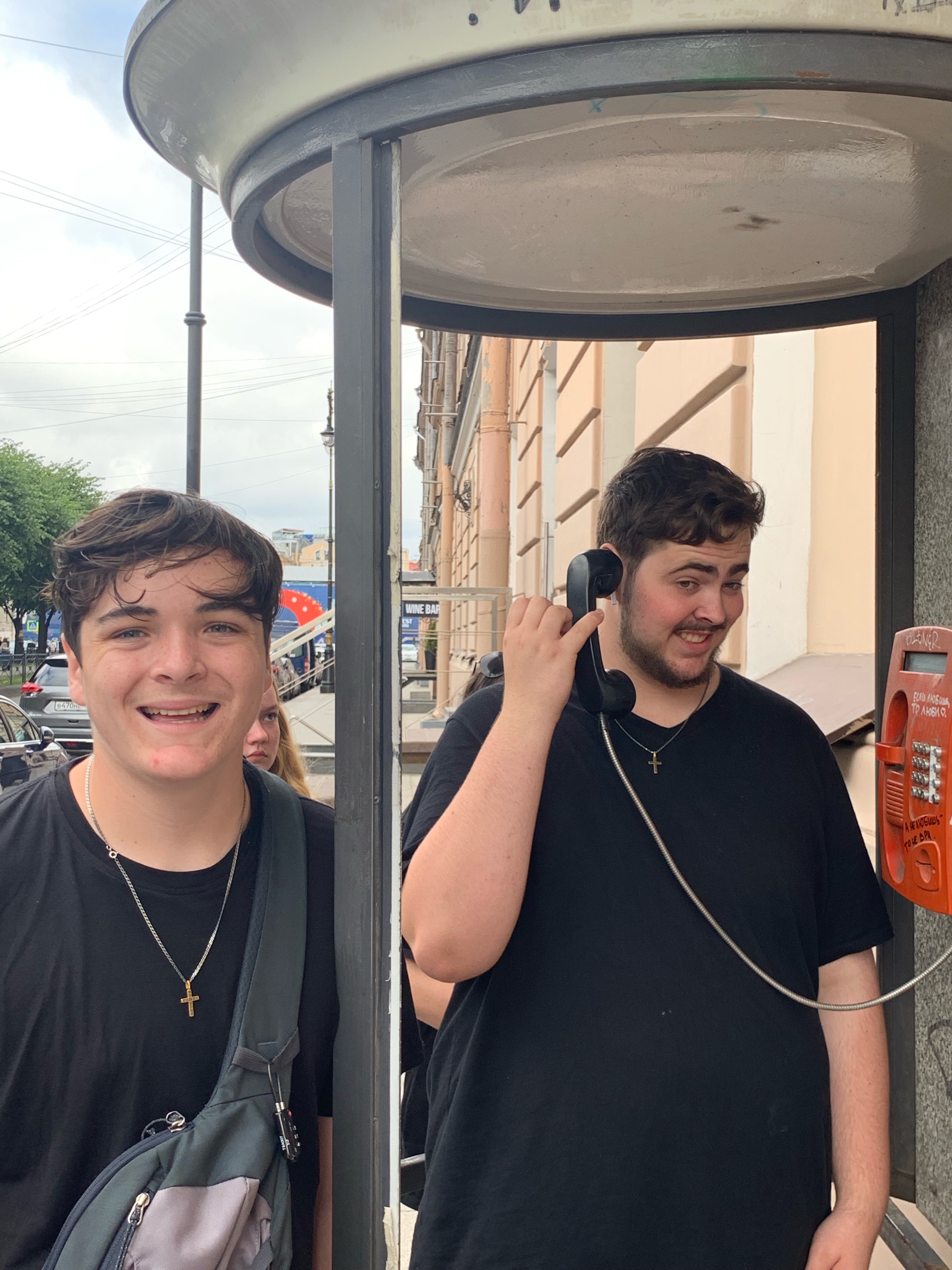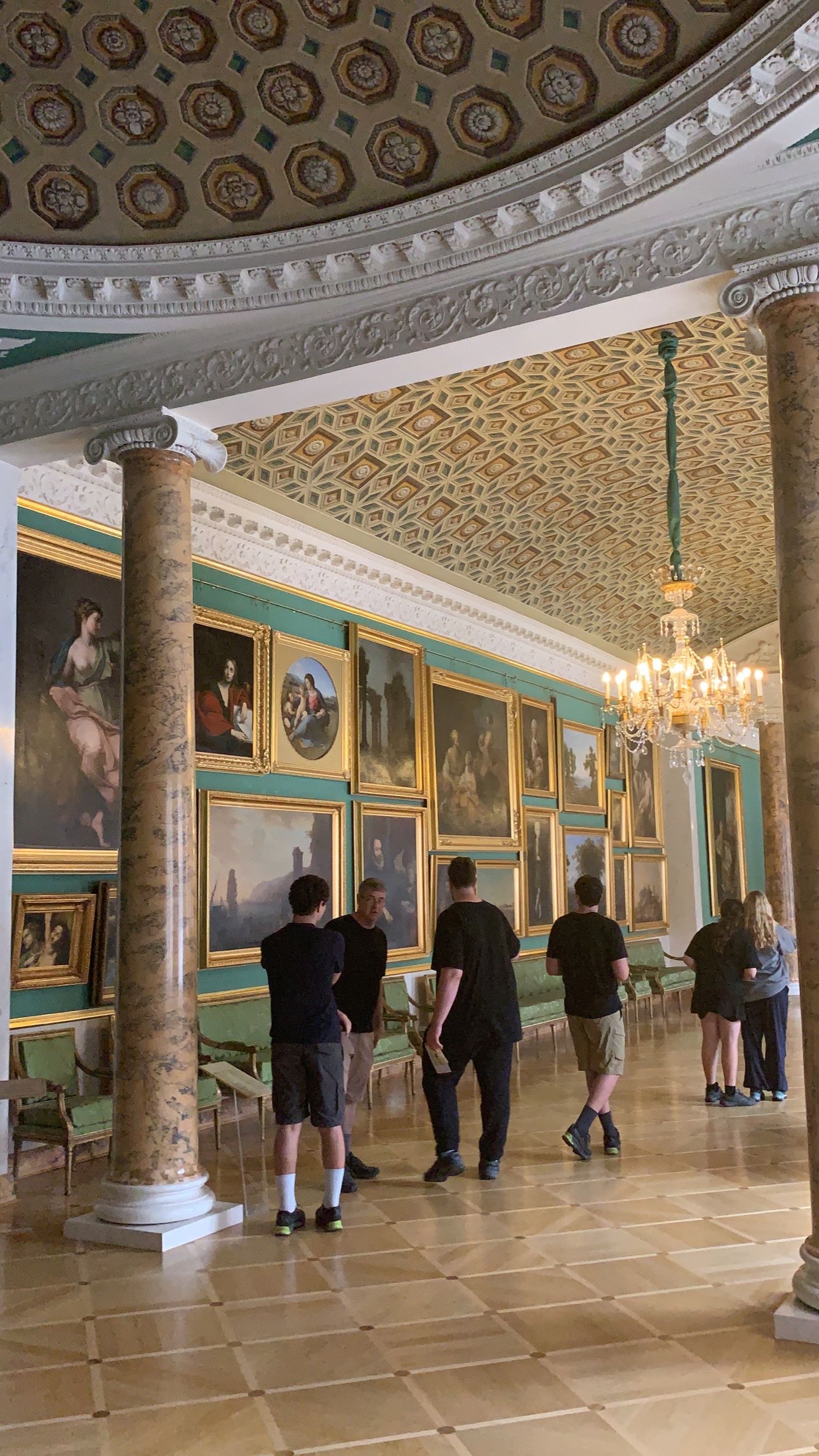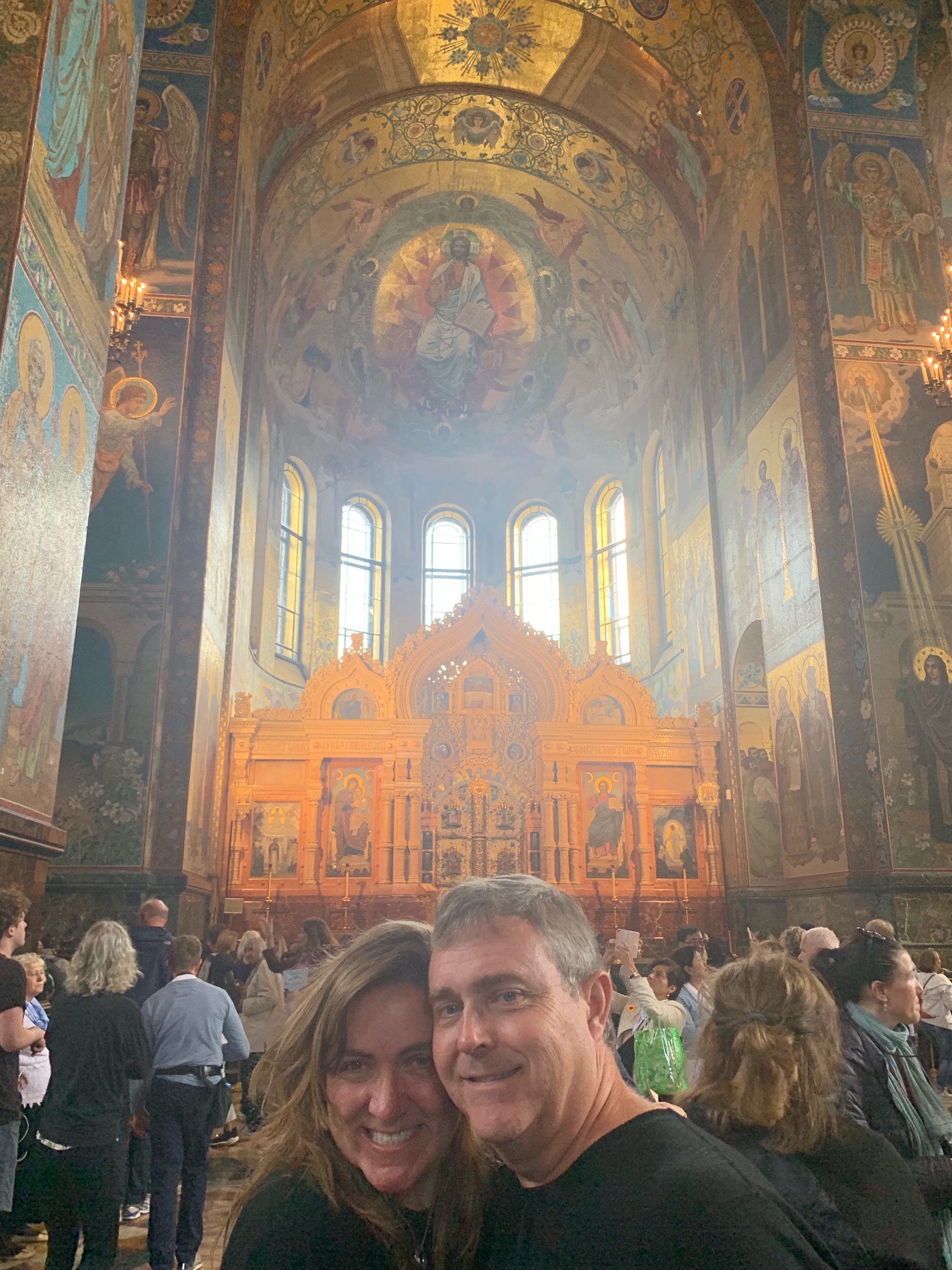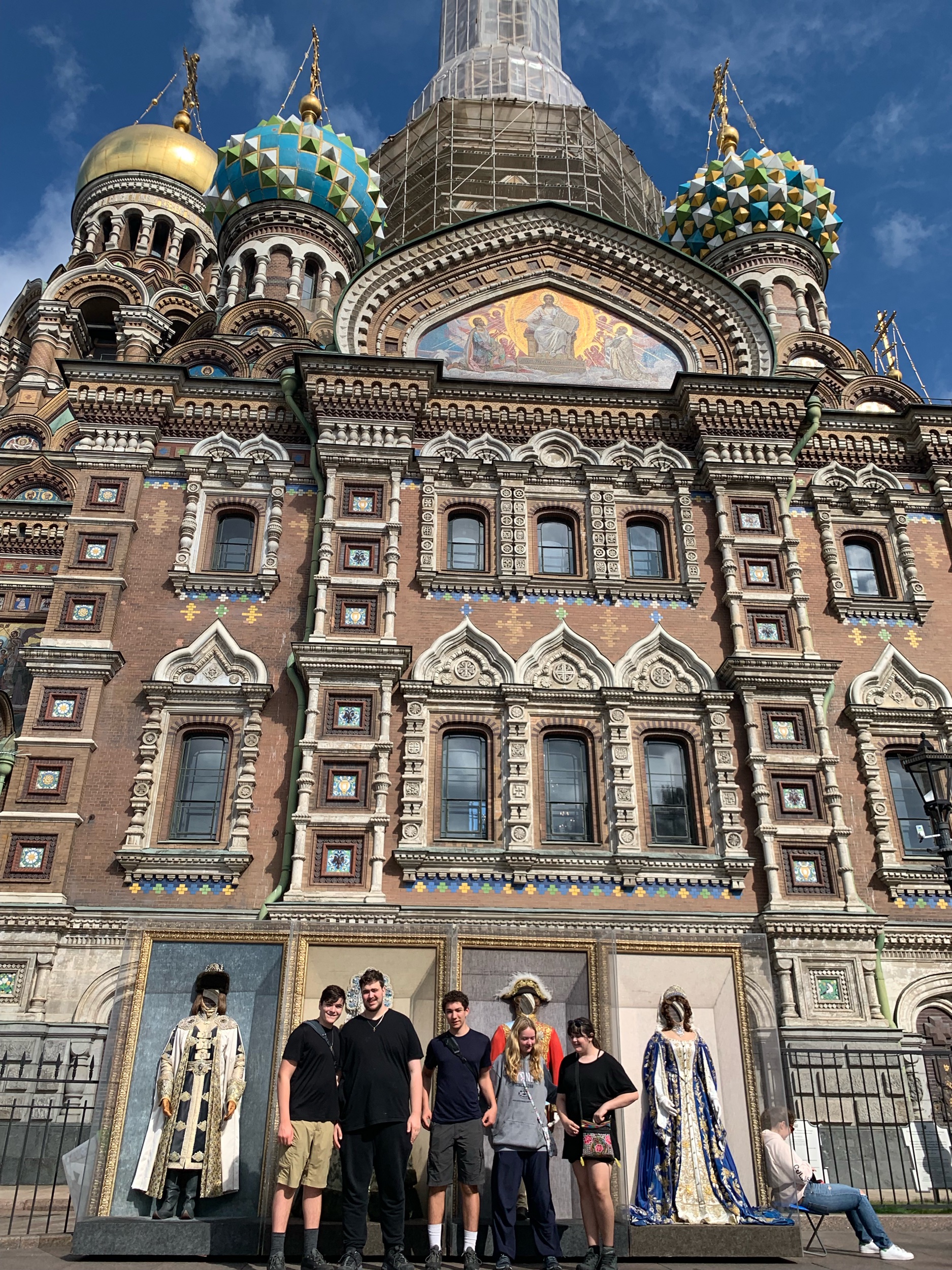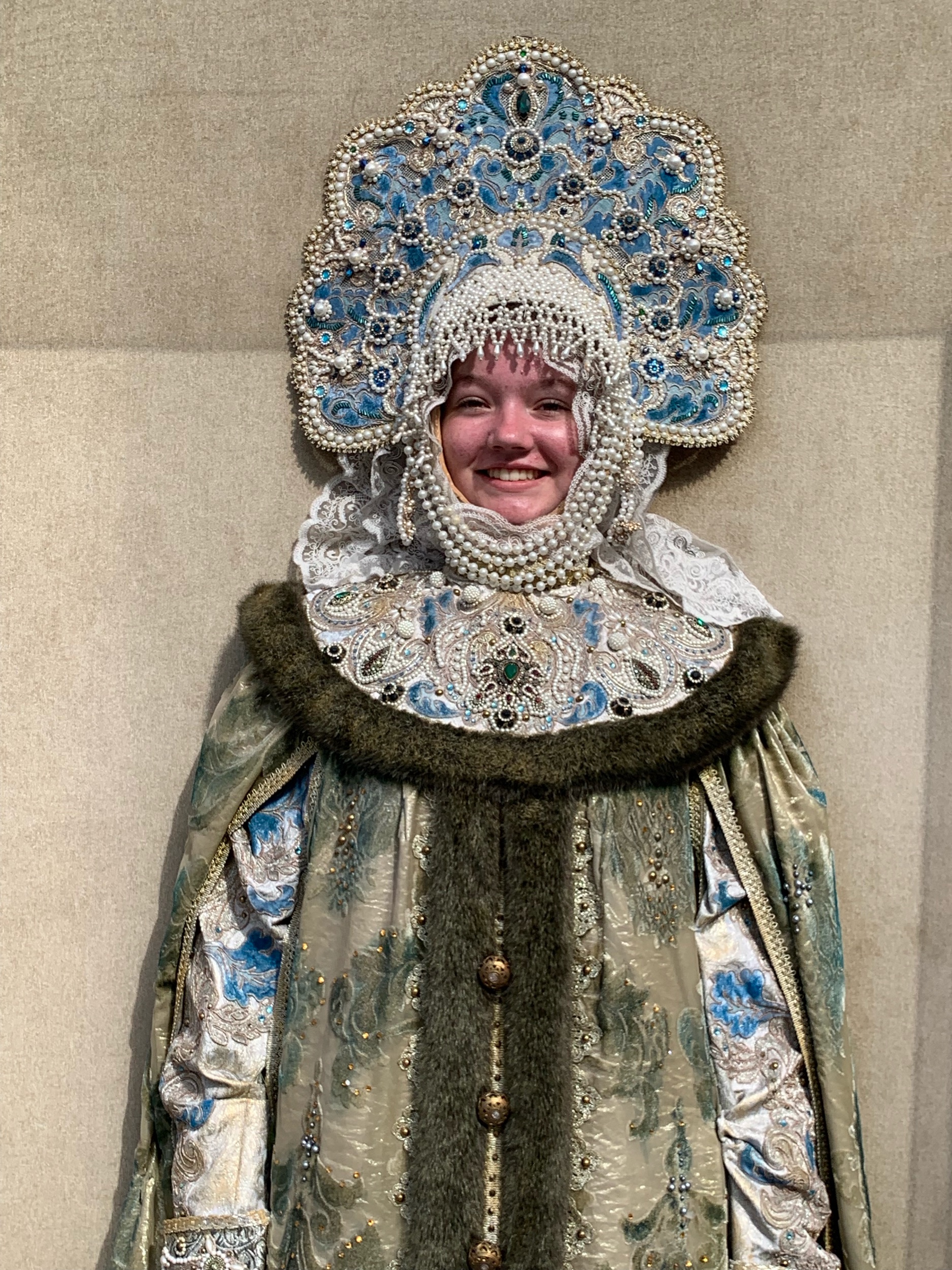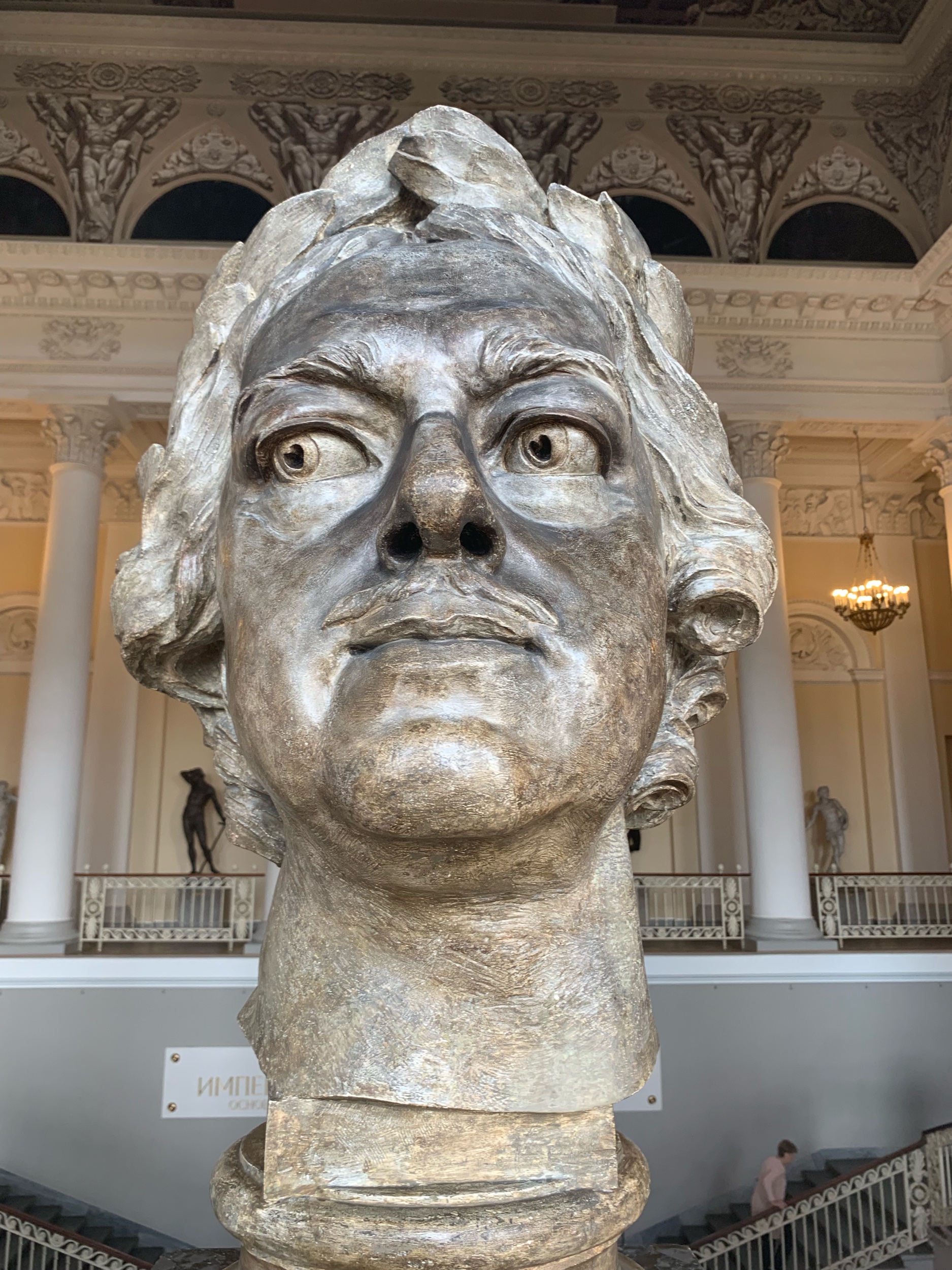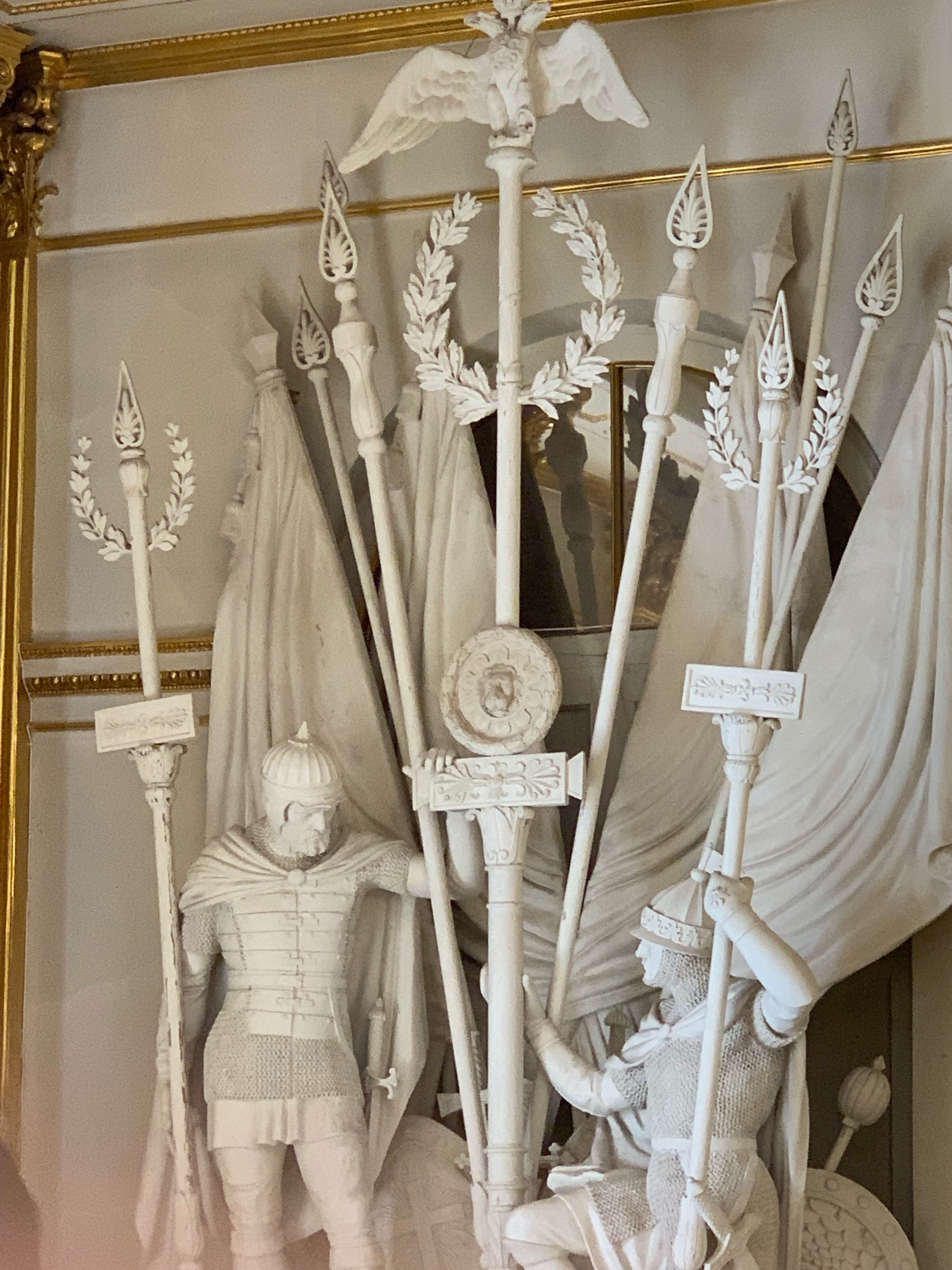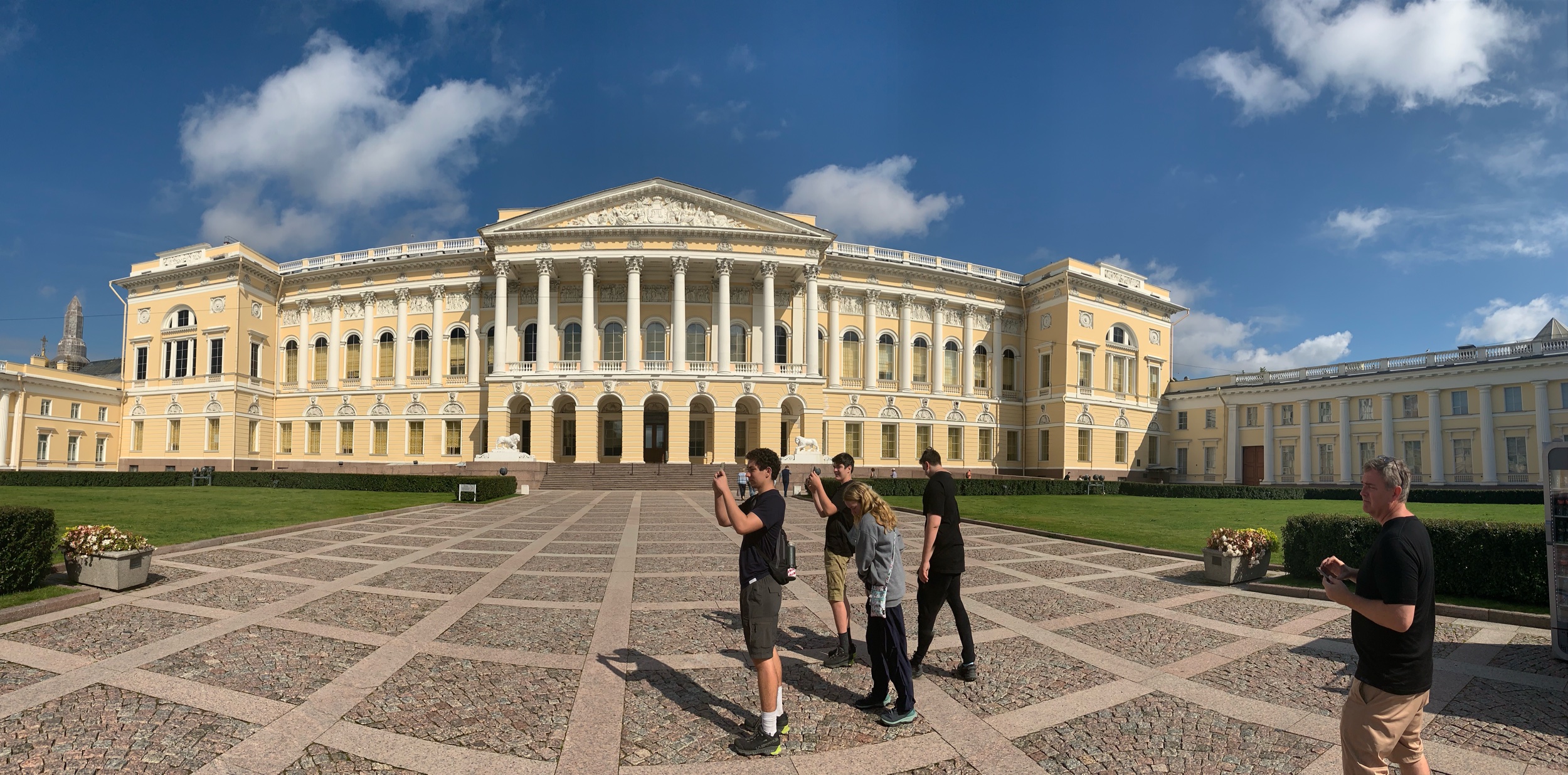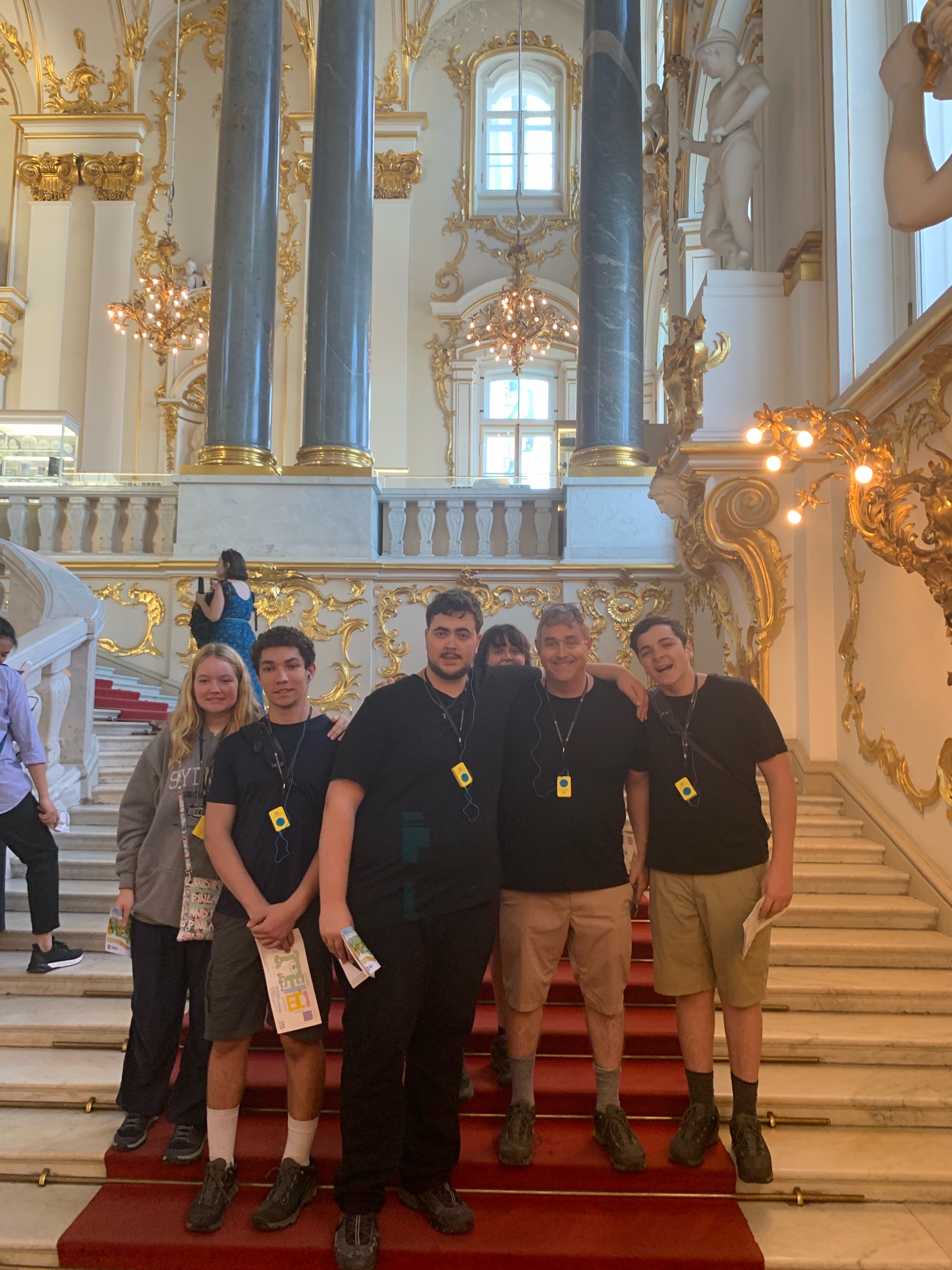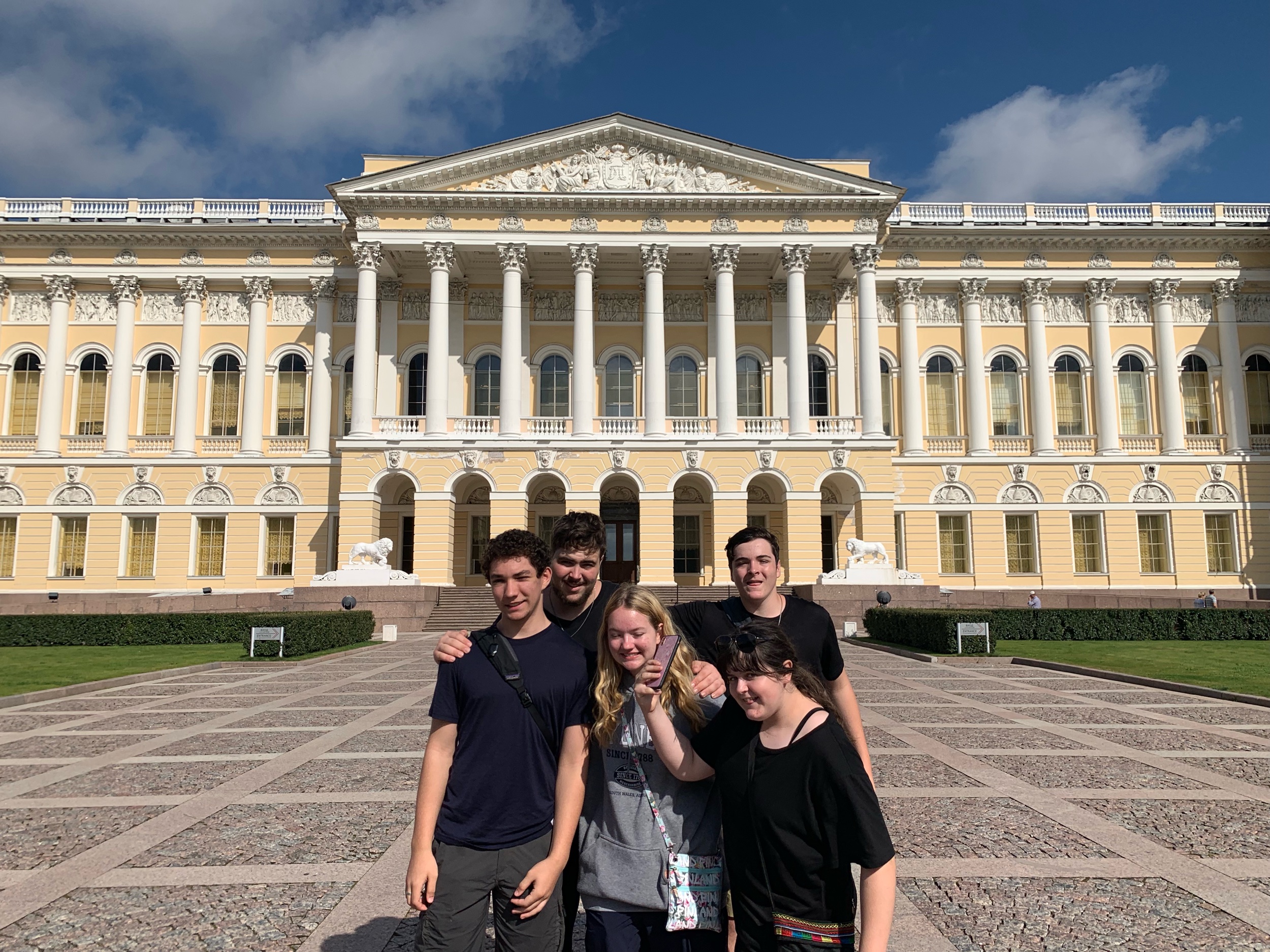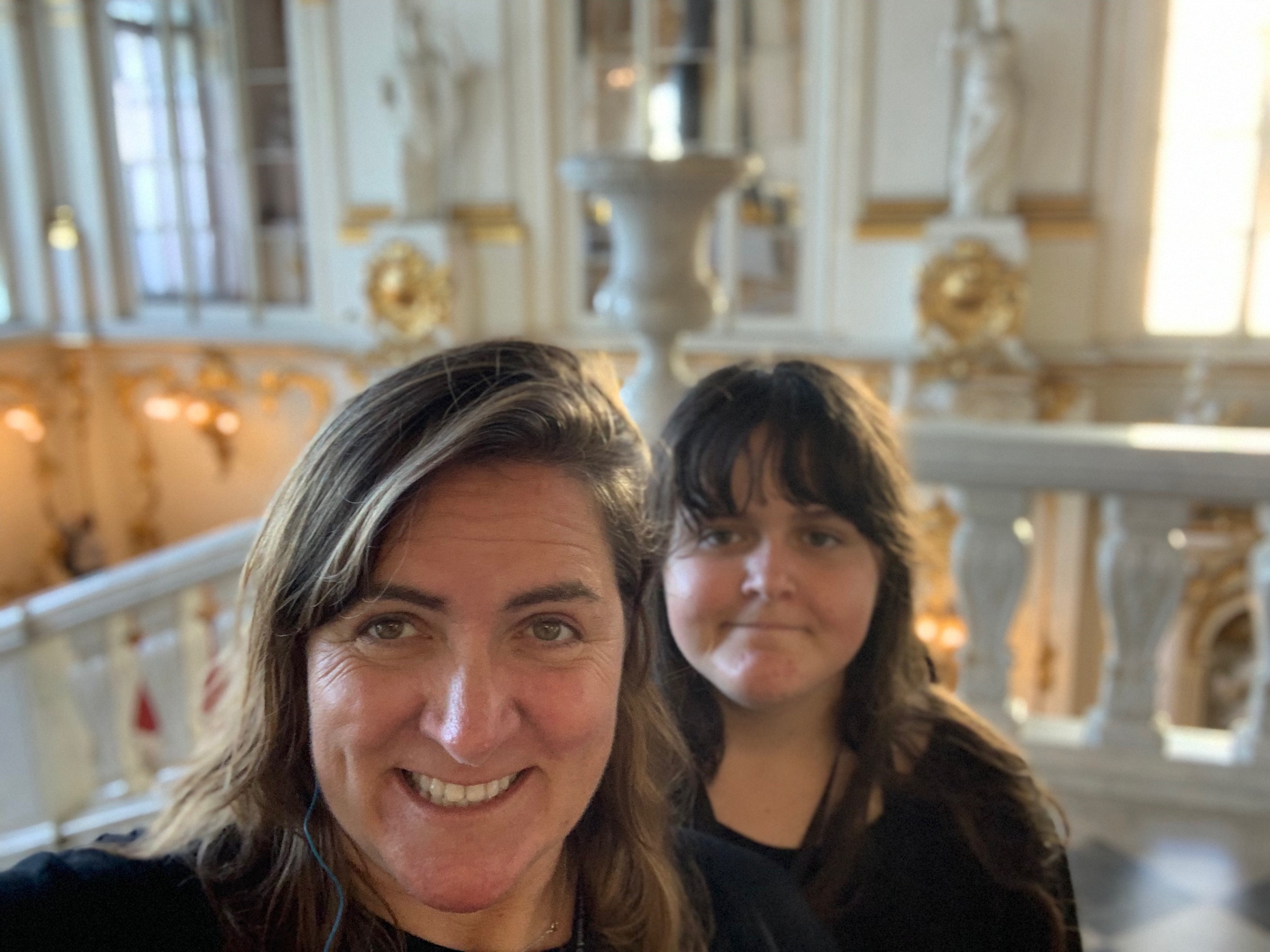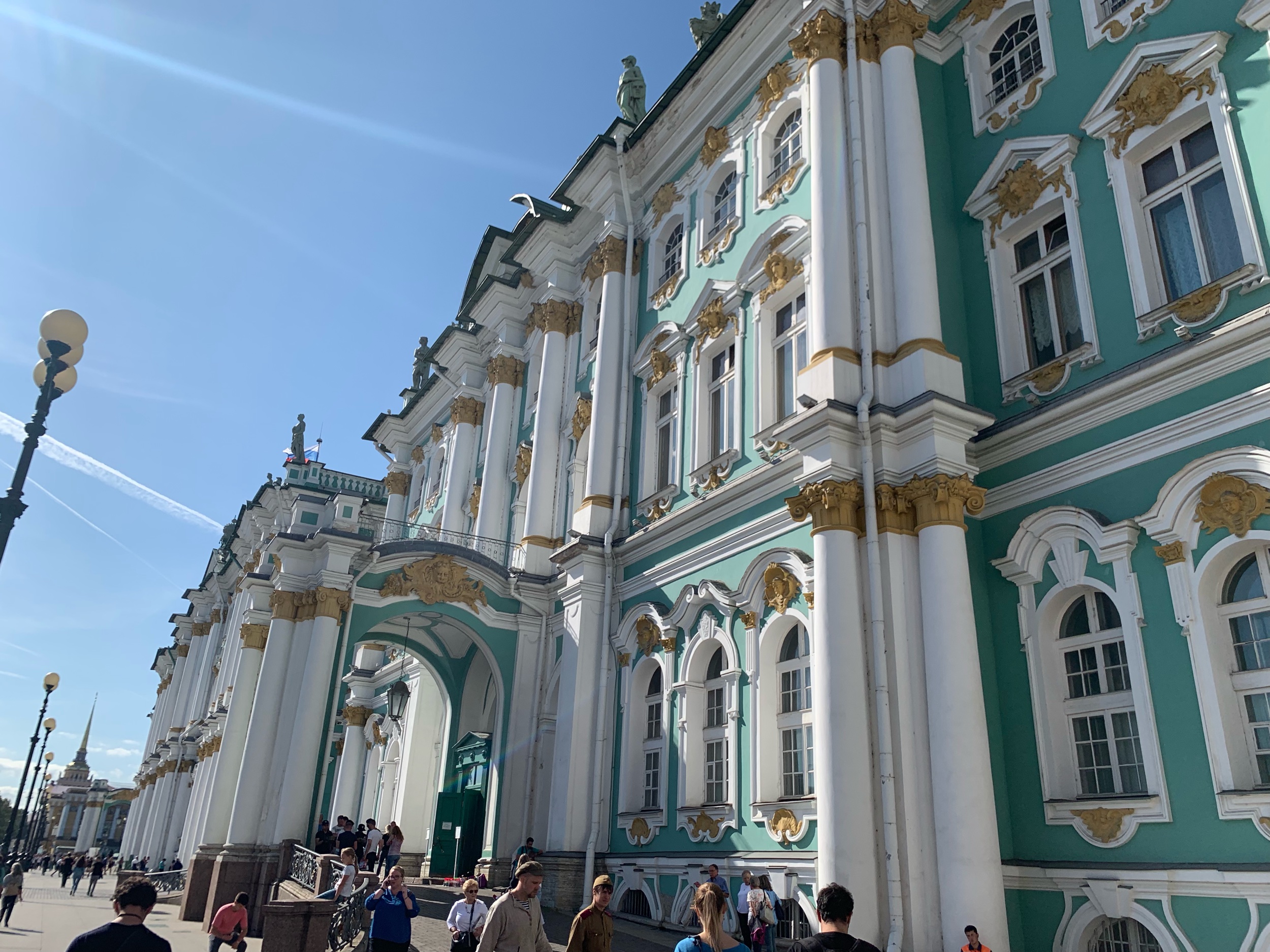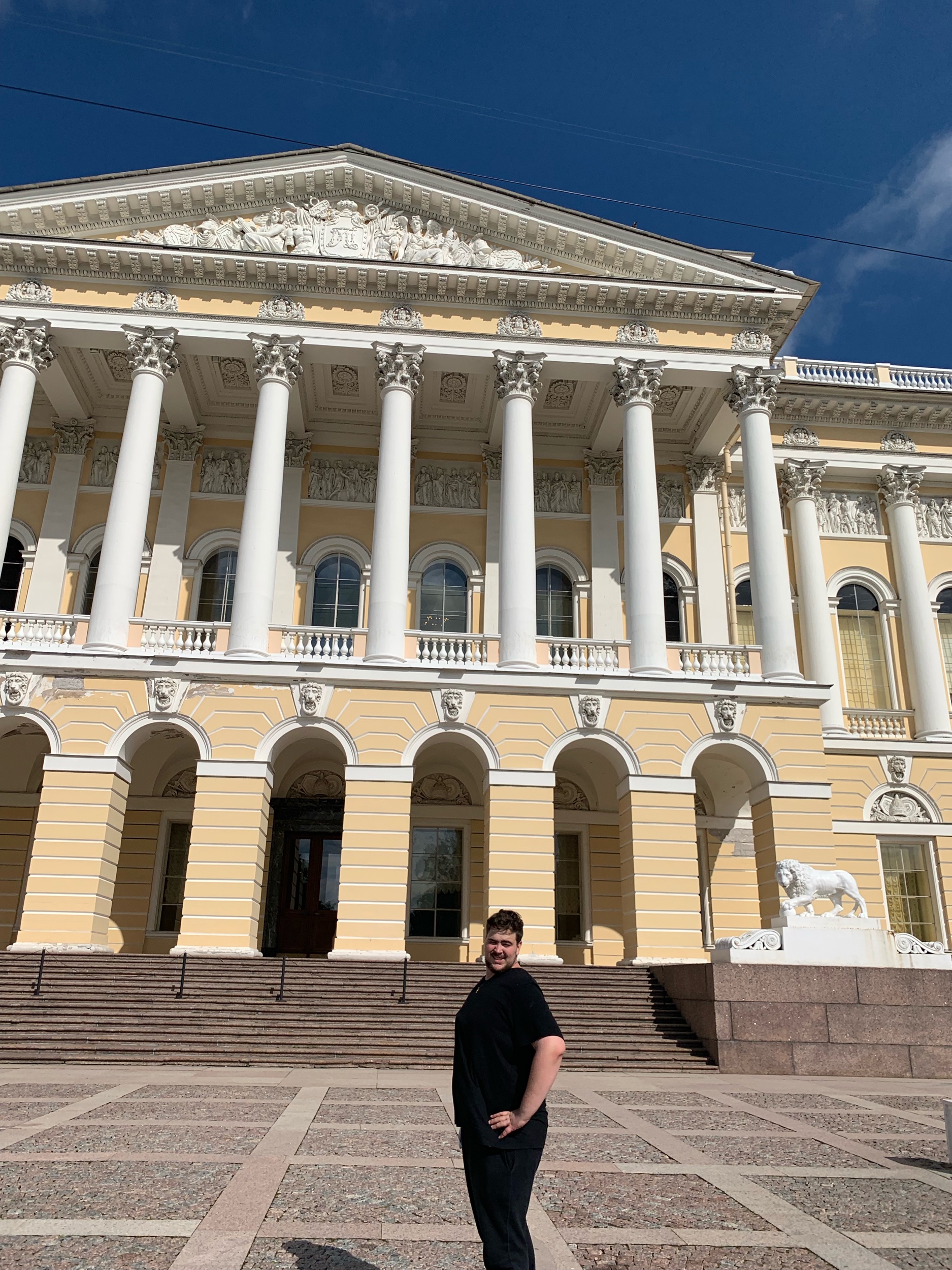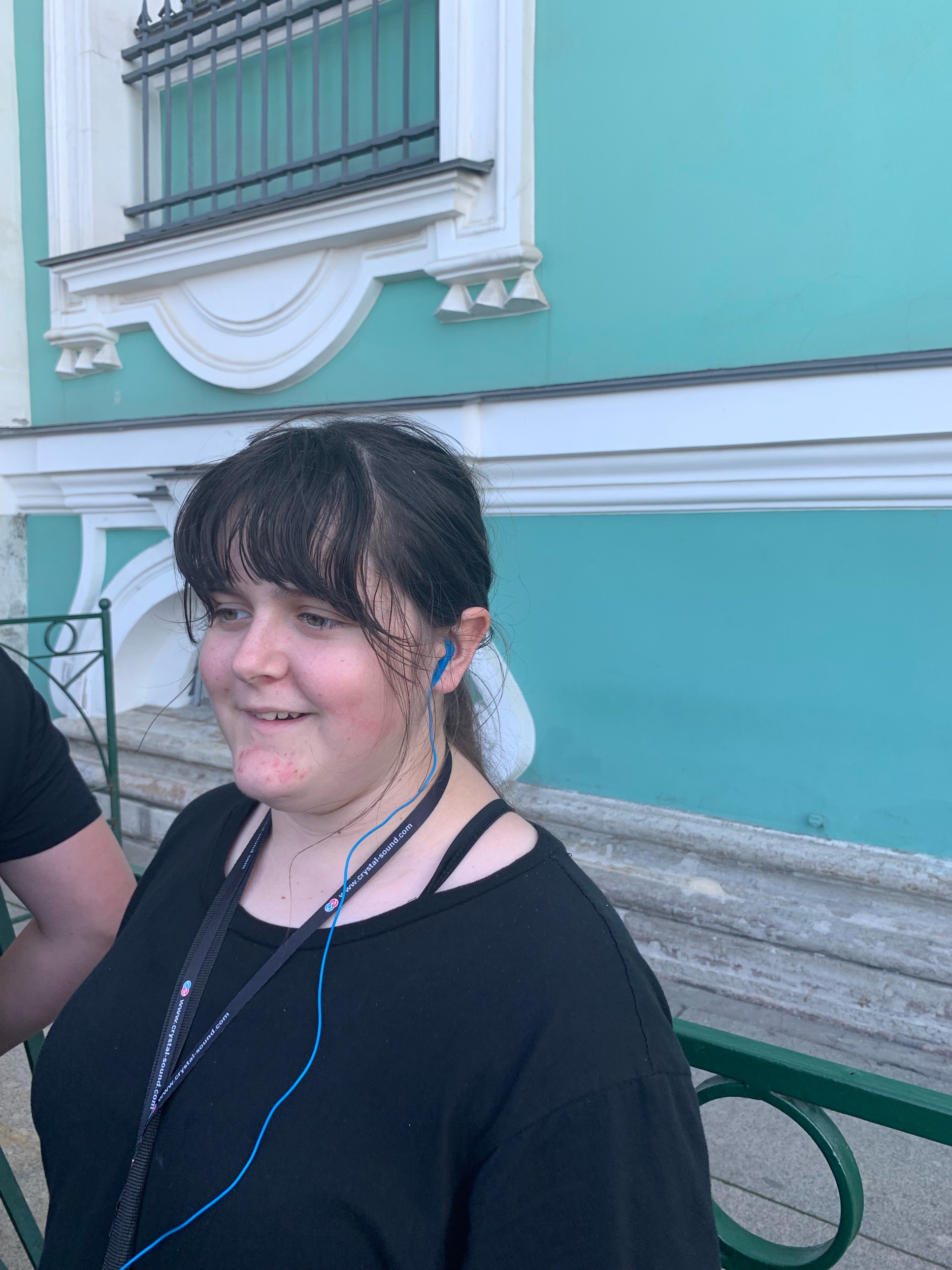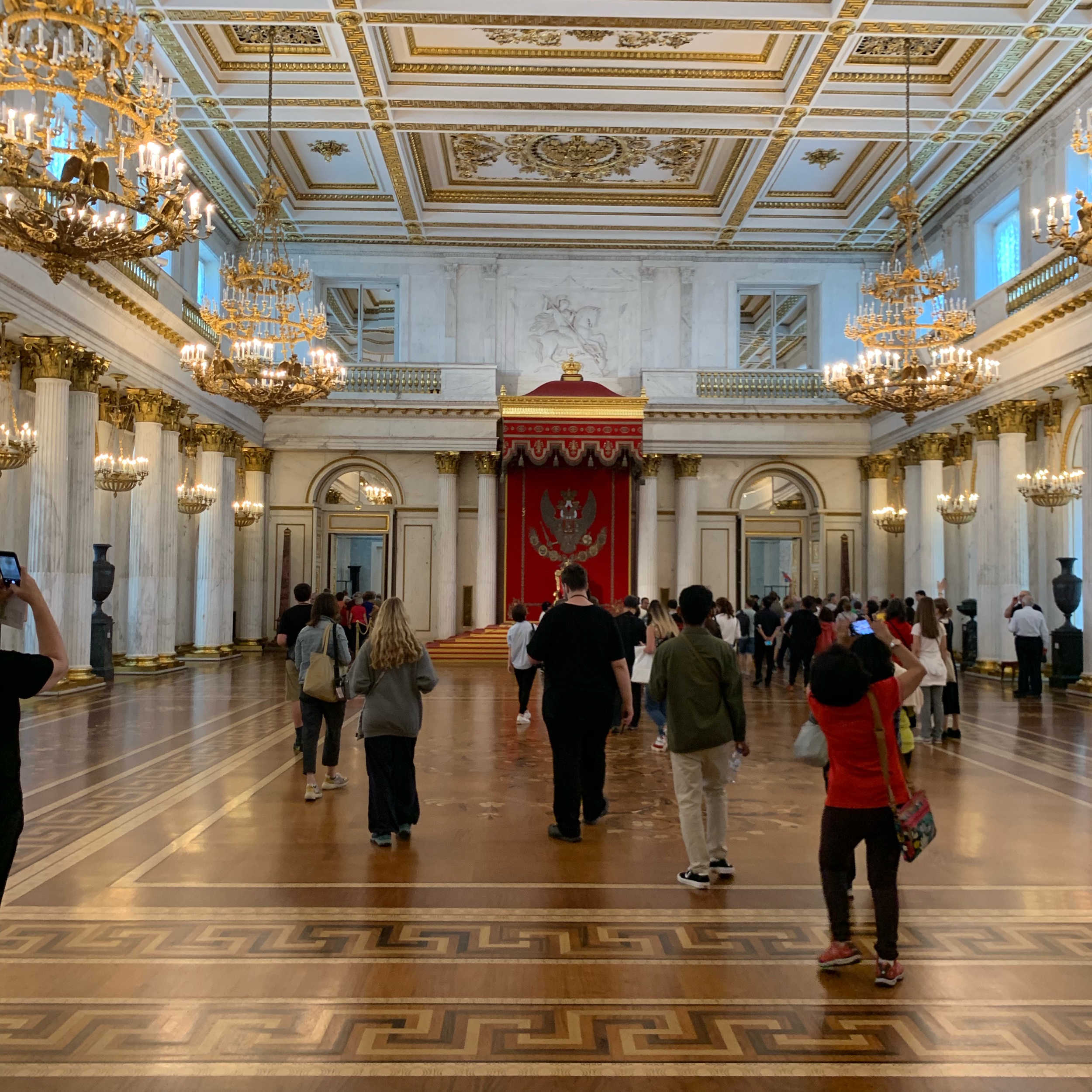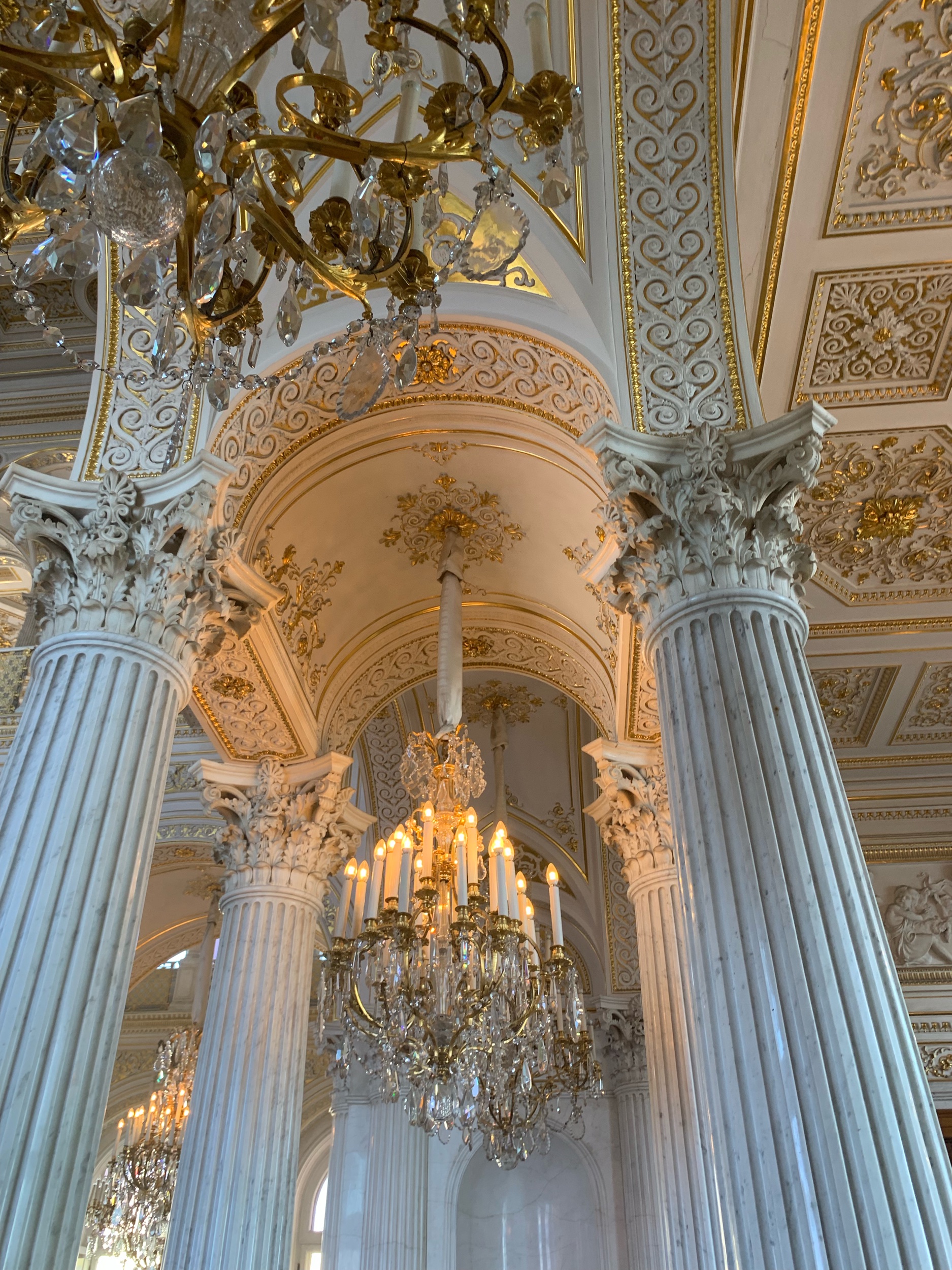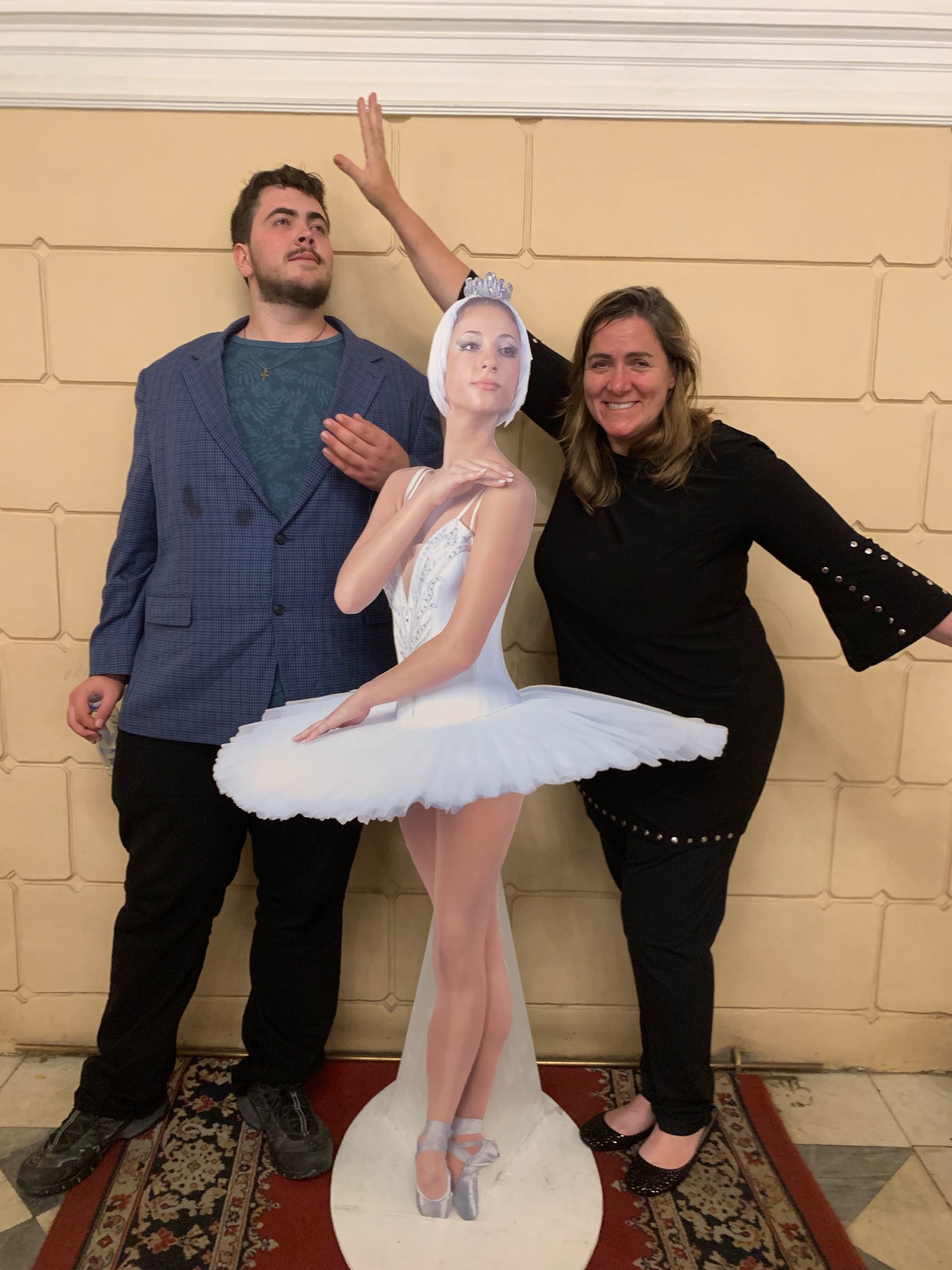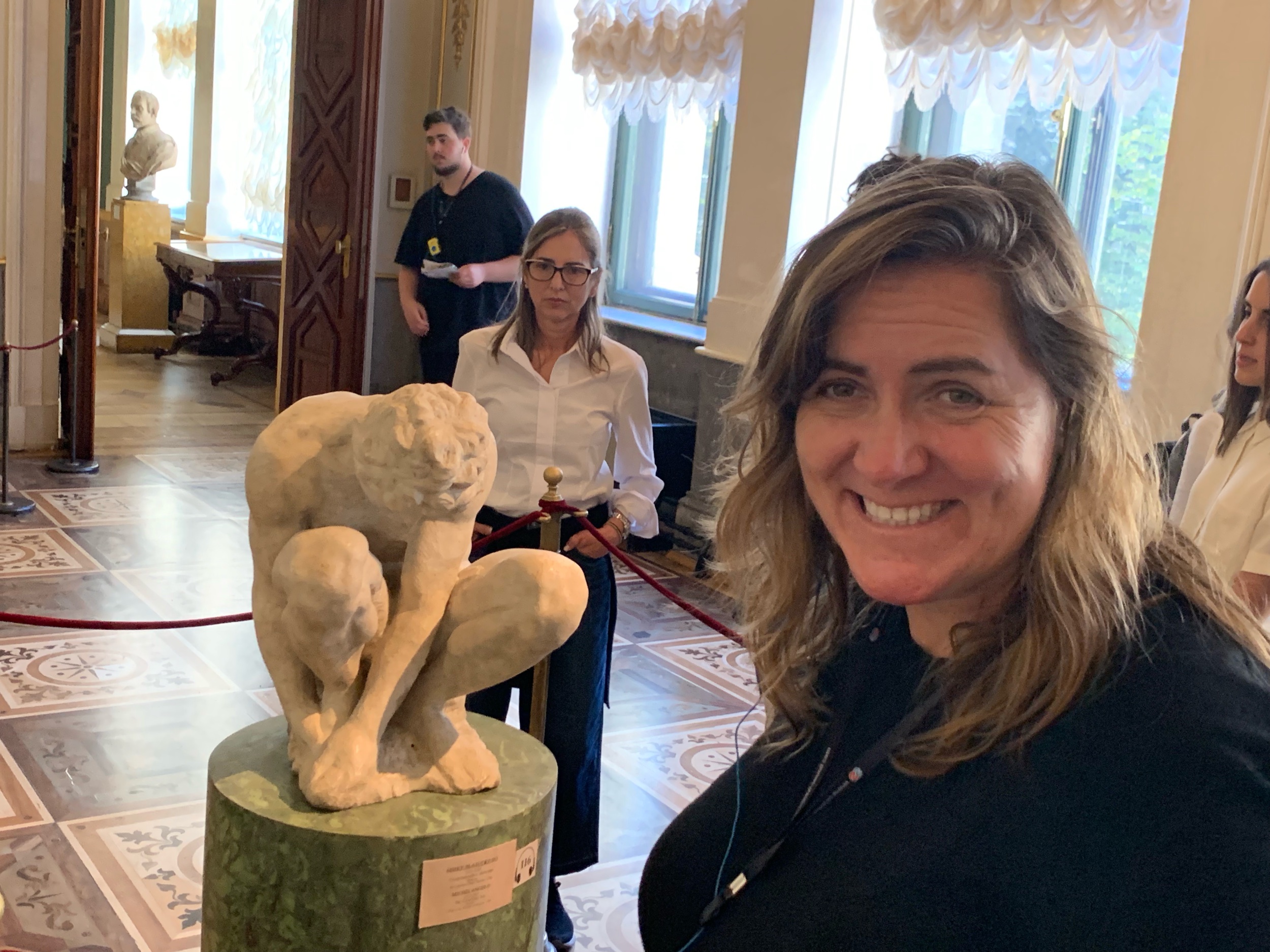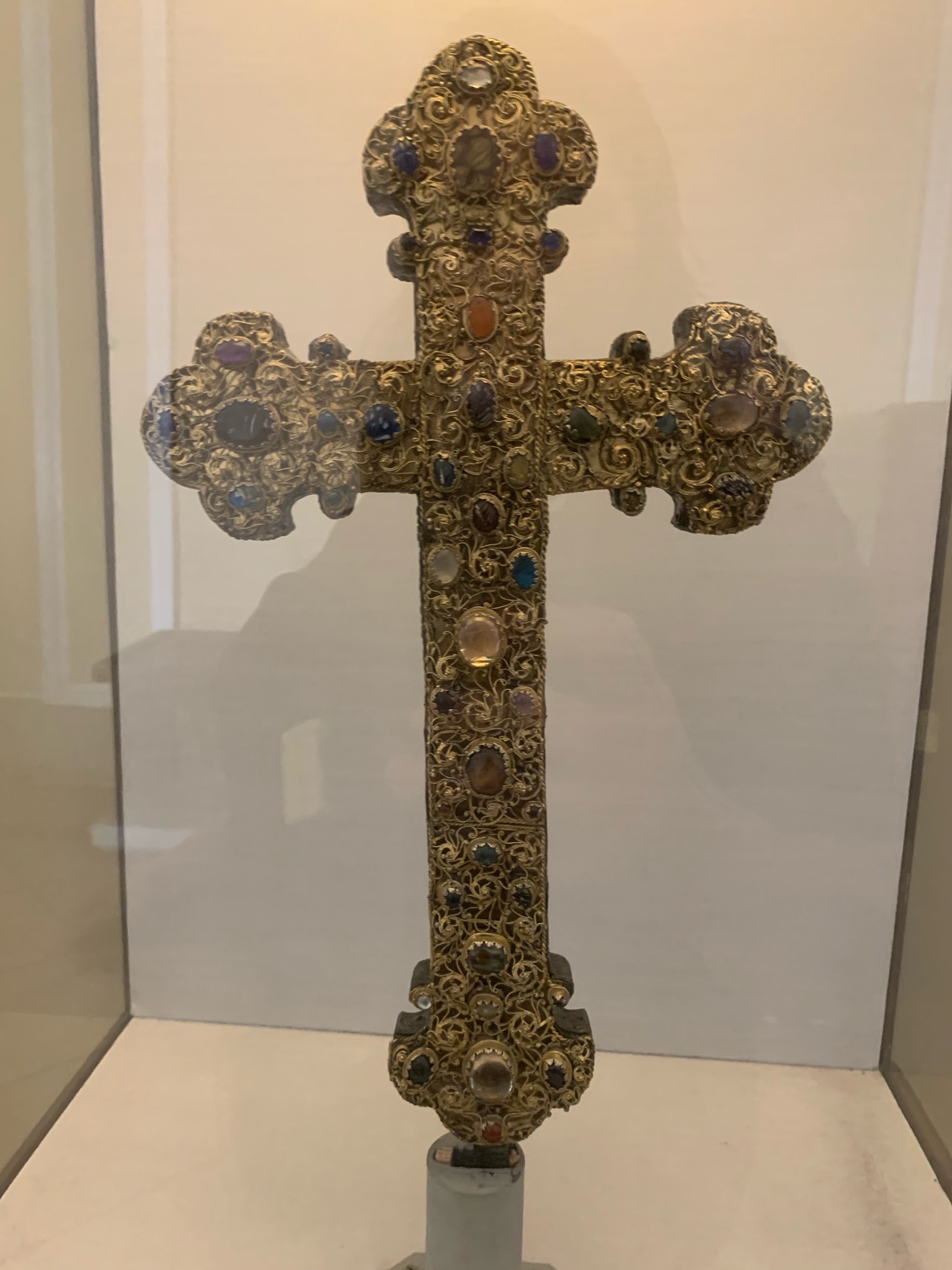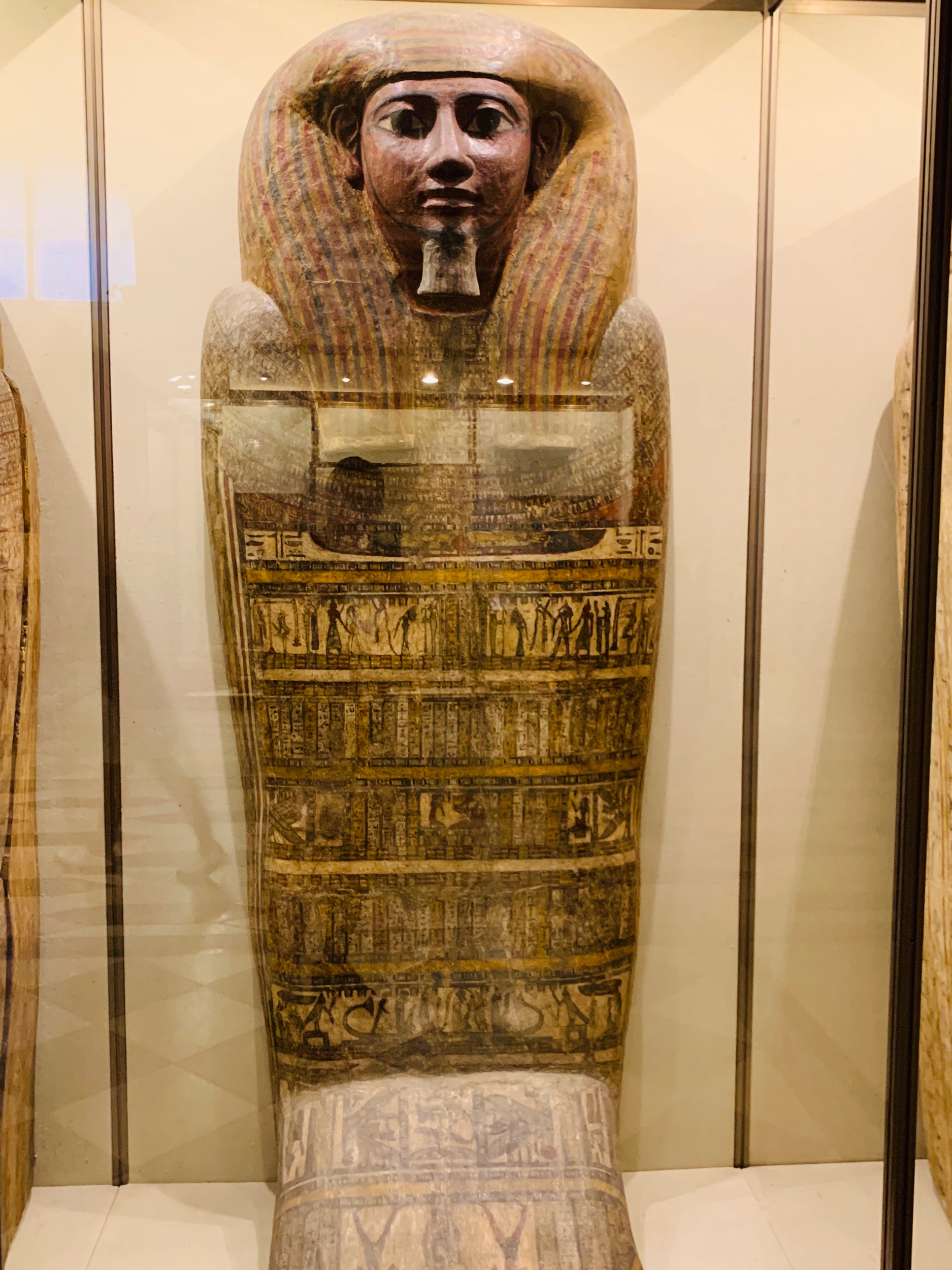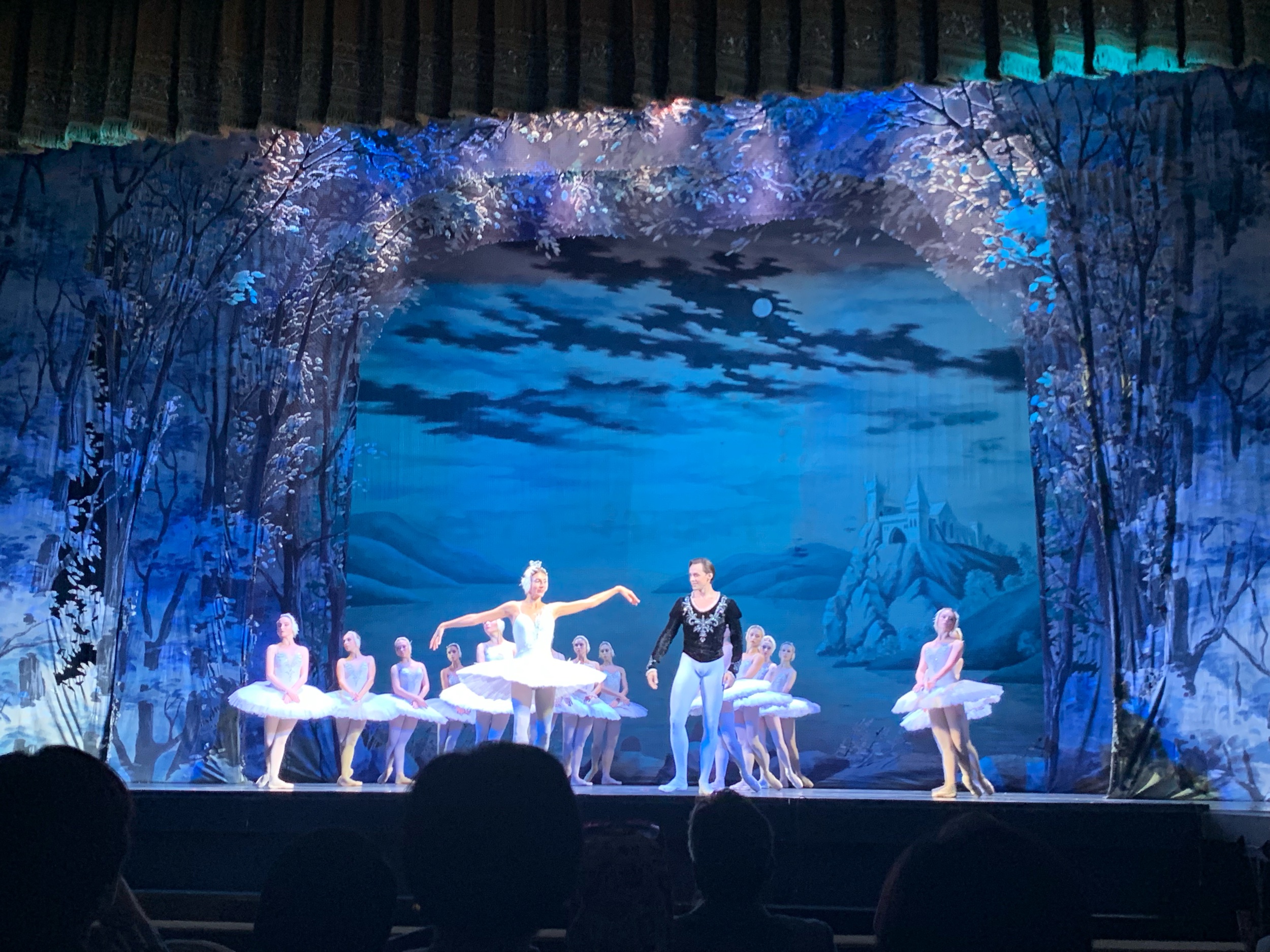8-31-19 - Monster day in St. Pete's - will the step record be broken?
/Day 76.
There are certain days I wake up knowing it is going to be a “big sauce” day where there is a chance that I break my record for number of steps in a day which currently stands at 22,909 steps from Budapest. Today is one of those days.
Stop numero uno is the Kazan Cathedral (also known as the Cathedral of Our Lady of Kazan who is one of the most venerated icons in Russia) is a Russian Orthodox Cathedral on Nevsky Prospect which is the main through street in St. Petersburg. The church was completed in 1811 under the supervision of Alexander Stroganov and modeled after St. Peter’s Basilica in Rome. At the time, the Church was seen as memorial to their victory over Napoleon Bonaparte who invaded Russia in 1812 but was defeated.
We are similarly blown away by this Cathedral and can see the Roman architecture evidenced in the exterior structure with columns reminiscent of the Coliseum. The interior is very ornate resplendent with gold and paintings but we agree not quite as impressive as St. Isaac’s. Similar to St. Isaac’s, the Cathedral was turned into what would be known as Leningrad’s (former name of St. Petersburg) largest atheist and anti-religious museum. Unlike St. Isaac’s, Kazan Cathedral was successfully returned to the Russian Orthodox Church in 1996 and functions as the mother Cathedral of St. Petersburg.
Next is the chocolate museum. It turns out the chocolate museum is more like a chocolate store with all sorts of elaborate chocolate designs including pandas, cats, dogs, roosters, horses. We’d had preferred not to visit it at 10am but it was geographically on the way so the kids are treated to chocolate as a mid-morning breakfast snack.
Next is The Stroganov’s Palace. I think this one is less visited as the attendants when we enter don’t speak English and they have to go out into the palace to bring back someone who speaks a little. We get the tickets all sorted out and I ask her if Baron Stroganov was the one who invented the Russia dish beef stroganoff. She didn’t even crack a smile. I’m going to chalk that one up to language barrier but I make a mental note that I need to work on my Russian humor.
The museum is small but good and it’s hard to compete with some of the more impressive museums and palaces we’ve visited. The palace was built in the late 1700’s when the Stroganov’s were the richest family in Russia. After the October revolution of 1917, the remaining Stroganov’s emigrated from Russia and the family line is no extinct. `
Next up, the Church of the Savior on Spilled Blood. The Church was built on the site where political anarchists fatally wounded Emperor Alexander II with a grenade in 1881 (thus the name on spilled blood). The church was completed in 1907 during the reign of Nicholas II. It is hard to describe the outside of the church. The architecture is medieval Russian in the spirit of romantic nationalism. To me it looks like something out of a Christmas fairy tale.
The inside boasts 7,500 square meters of mosaics. Just to be sure, I checked what a mosaic is and it’s made by assembling small pieces of colored glass, stone and other materials in decorative art or interior decoration. It seems to me like it would take a really really really long time to do 7,500 square meters of mosaic. According to1 Wikipedia it is the second largest church mosaic after (surprising to me), the Cathedral Basilica of St. Louis (Missouri).
Unfortunately, not too long after its completion, the church was closed in 1932 by the Soviet government. Now, you might be asking what they used all these closed churches for after they were closed. Apparently, not all of them were turned into Atheist museums as this one was used as a morgue in WW II and warehouse to store vegetables. After 27 years of restoration, it re-opened as a museum of mosaics in 1997. It is now stunning to behold.
Next up (I think we’d lost count by this point) is the State Russian Museum housing the world’s largest collection of Russian fine art. It was originally established from artworks from the Hermitage Museum, Alexander Palace and the Imperial Academy of Arts, but after the revolution of 1917 many private collections were “nationalized,” taken and relocated to the Russian Museum.
John and Justin are excited for The Ninth Wave, an 1850 painting by Russian maritime painter Ivan Aivazovksy. The ninth wave is an old sailing expression referring to a wave of incredible size that comes after a succession of incrementally larger waves. Sounds like a surfer’s dream to me but the people in the remains of their boat on the water don’t look so enthralled. John & Justin point out that is the 34thmost famous painting according to Brushwiz (don’t ask me who Brushwiz is as you know my now apparent skepticism for subjective rankings).
I notice that next to it, there is another of his paintings titled The Wave. “Ut-oh,” I tell the boys, “we got a big sauce problem, the 2ndthrough 8thwaves are missing.” Ok, some days my humor is a little off and this appears to be one of those days. I’m kind of feeling like Kobe Bryant when he is shooting 2 for 20 and keeps heaving them up.
By now, it is only 2pm and we still have the entire Hermitage to cover which we are doing with a group tour. The Hermitage is billed as the 2ndlargest art museum in the world. I ask the tour guide if this is measured by square feet of exhibitions, number of pieces, number of pieces on public display, number of visitors, etc. I don’t think she’d ever gotten this question before because she responds, “I’m not sure, it’s just really really really big.” She wasn’t kidding there; this museum is ginormous. My own google search reveals that it’s based on total exhibition area. The Louvre in Paris is numero uno at 72,735 square meters and The Hermitage is numero dos at 66,842 square meters. They have 3 million items although on ~1/3 of them are on public display.
The Hermitage is actually a series of buildings including the main one which is actually a connection of five buildings including what used to be the Winter Palace (where the Royal Family lived). We learn a lot of the history of the Russian Monarchy. The Princes of Russia and then Tsars of Russia ruled until 1721 when The Empire of Russia was declared by Peter the Great who became the first Emperor Peter I in 1721. Catherine II, aka Catherine the Great was very influential in the cultural development of St. Petersburg and effectively was the founding force for assembling the art collection that would become The Hermitage Museum.
The coolest thing we saw (in my opinion) was that there were two paintings by Leonardo da Vinci, two paintings by Raphael and a sculpture by Michelangelo. Another was they had ancient Egyptian artwork and sarcophaguses from 700 – 1400 BC.
After a 4 hour walking tour of the Hermitage, we collapse down for dinner at a pizza restaurant. Having fulfilled our Russia meal the night prior, we can justify it with the walking we’ve done today.
The challenge is that after dinner, we still have a performance of the Russian Ballet “Swam Lake” by Tchaikovsky. John, Justin, Leanne and I settle in for the show at 8pm when Hypnos, the Greek God of Sleep, hits me like a ton of bricks. I half to fight to stave off the sleep gods for the first half and thrown in the towel at the intermission fully admitting my mere tourist self is no match against a Greek God.
We walk back and I excitedly check my Apple Health app and see that my steps registered 22,094 (10+ miles) but ~800 short of my record. I desperately want to walk around the block several times to break the record but I know that Hypnos will not take kindly to me if I do anything but fall in bed into an exhausted sleep which is exactly what I do.






